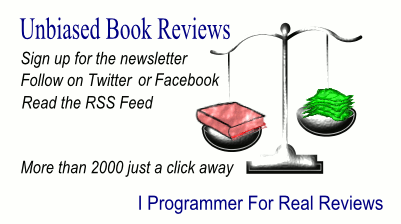| Easy Microsoft Excel 2010 |
Author: Michael Alexander Excel 2010 is so different from Excel 2003 and earlier that even seasoned spreadsheet users may need help. Is it provided by this book?
Author: Michael Alexander By referring to "senior readers" the product description almost put me off - but I can't find that description in the book or even on the back jacket - although I did find the introduction a bit condescending. The main criticism I have - and the reason this book doesn't get a 5 star rating - is that making some of the pictures 10% bigger would have made a world of difference. A big typeface is used for text but essentially this is a picture book and it's often difficult to see the detail that is being pointed out in the screen dumps.
What I did like about the book was its logical approach. It starts with the an exploration of the user interface and while that might be a bit boring for the complete newcomer to using a spreadsheet it is certainly helpful for those upgrading from pre-ribbon Excel. Chapter 2 covers opening, closing, saving and managing workbooks and it is only at Chapter 3 that we get to entering data into a spreadsheet and manipulating it. While it gets as far as adding comments to cells it misses an important aspect of Excel that really should be covered - the Autofill handle for entering repeating data or a series. It also fails to deal with entering dates. Chapter 4 is devoted to formatting and again there's an omission - no mention of percentage format - although it is good on layout and features such as hiding and unhiding. Almost halfway through the book we get to formulas and functions but again no advanced ideas are even hinted at. Chapter 5 starts with using the AutoSum icon and the other built-in formulas for calculation - Average etc - that are on the Sum dropdown list . Insert Function, using the fx button is covered together with just four of the hundreds functions on offer - IF, PMT, FV and SUMIF. The chapter also gives the information needed to avoid seeing #### or #DIV/0! in a cell and fixing the #NAME?, #VALUE? and #REF? errors and circular references. While dealing with cell references it doesn't introduce absolute and relative cell references - that's too advanced for this introductory volume. Chapter 6 on charts covers column charts exclusively. The content is fine as far as it goes but doesn't let the reader know about other possibilities on offer in Excel. Working with Graphics (Chapter 7) on the other hand seems pretty complete. Chapter 8 is on printing and goes into the topic in welcome depth. The final chapter is on pivot tables. This is a surprising inclusion since the topic is considered a difficult one but in fact it succeeds in making it seem easy - but it does this by avoiding many of the issues. So if you are presented with an existing spreadsheet and told to produce a pivot table report you could probably do it by following the steps - but that is only part of the story. While I cannot fault the content of this book I am disappointed by its selectivity. It leaves a lot out and what is worse it doesn't hint that there is more to discover. It is a well known fact that Excel users only ever use a tiny fraction of its resources - this book may even serve to reduce the fraction.
|
|||
| Last Updated ( Wednesday, 15 September 2010 ) |

